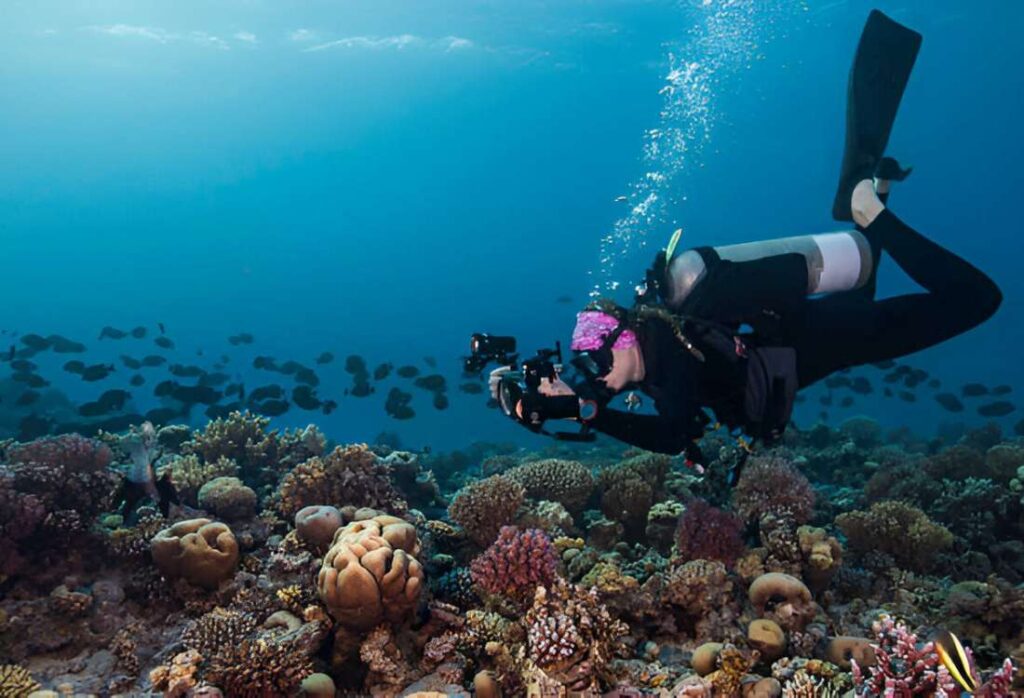The Great Barrier Reef, located off the coast of Queensland, Australia, is the world’s largest coral reef system, stretching over 2,300 kilometres. It is composed of nearly 3,000 individual reefs and 900 islands, making it one of the most complex and extensive marine ecosystems on Earth. This UNESCO World Heritage site is not only a natural wonder but also a critical habitat for countless marine species.
The reef’s significance extends beyond its ecological importance; it holds cultural value for the Indigenous Australian communities and is a major draw for tourists from around the globe. Understanding the geographical location, scale, and multifaceted significance of the Great Barrier Reef sets the stage for appreciating the intricate beauty and ecological complexity that divers will encounter.
Preparation for the Dive
Proper preparation is crucial for a safe and exciting diving experience on the Great Barrier Reef. Start by making sure you have the essential diving system. Including a well-fitting mask, snorkel, fins, wetsuit, and a reliable scuba tank. Additionally, familiarize yourself with safety systems including buddy checks, emergency maneuvers and buoyancy control. It is also essential to check the best times of the year for diving. As climatic conditions and water visibility can vary. Divers should appreciate environmental guidelines to protect sensitive reef ecosystems. Including avoiding touching corals, not stressing marine life, and ensuring no waste is left behind. Proper education complements every safety and general diving experience.
Understanding Coral Reefs
Coral reefs are complex and diverse ecosystems that play an important role in the marine environment. The Great Barrier Reef hosts a variety of corals. Including hard corals that form the reef’s spine, and soft corals that add to its colorful range. Coral reefs are built by tiny organisms called polyps. Which secrete calcium carbonate to form the hard skeleton of the reef. Understanding the structure and composition of coral reefs helps divers appreciate the difficult beauty of that habitat.
Furthermore, the Great Barrier Reef is home to an outstanding range of biodiversity, including numerous species of fish, invertebrates and marine plants. Learning about the relationships between reef environments, including the symbiosis between corals and algae. Provides deep insight into the delicate balance and interdependence of marine existence.
Marine Life of the Great Barrier Reef
The Great Barrier Reef boasts a beautiful array of marine life, making it one of the most biodiverse ecosystems on Earth. Divers can spot a variety of fish species, from colorful clownfish and majestic parrotfish to the elusive and camouflaged stonefish. In addition to fish, the reef is home to a variety of marine life, including sea turtles. Which are often seen gliding gracefully through the water, and various species of rays and sharks. Including the gentle reef shark and the magnificent manta ray.
The reef additionally supports many invertebrates, including giant clams, sea cucumbers, and many colorful corals and sponges. Unique and endangered species, such as dugongs and confirmed forms of sea turtles, add to the attraction of the reef. Understanding the different marine life forms and their interactions within the atmosphere adds to the joy of diving and the importance of preserving this natural wonder.
Dive Sites in the Great Barrier Reef
The Great Barrier Reef offers a multitude of dive sites, each with its unique features and attractions. Popular sites include the Ribbon Reefs, known for their rich coral formations and diverse marine life. And the Cod Hole, famous for its friendly potato cod fish. The SS Yongala wreck, one of the most renowned dive sites, offers a hauntingly beautiful experience with a sunken ship teeming with life. For those seeking adventure, Osprey Reef in the Coral Sea presents deeper dives and encounters with larger marine species, such as sharks and pelagic fish.
Each site varies in depth and difficulty, catering to both novice and experienced divers. Detailed knowledge of the dive sites, including depth ranges, visibility conditions. And specific highlights, allows divers to choose the most suitable locations for their skill level and interests. Exploring these diverse sites provides a comprehensive view of the reef’s grandeur and complexity.
Experience of Diving
Diving into the Great Barrier Reef is an unforgettable adventure that immerses divers in a world of vibrant colors and dynamic marine life. The sensation of descending into the clear, warm waters, surrounded by swarms of tropical fish and intricate coral formations, is both thrilling and serene. Divers often describe the experience as otherworldly, with the reef’s beauty heightened by the play of sunlight filtering through the water. Close encounters with marine creatures, such as curious sea turtles, graceful rays, and the occasional reef shark, add to the excitement and wonder.
Mastering buoyancy control and navigation is essential to fully enjoy and explore the underwater landscape. The sensory overload of sights, sounds, and the feeling of weightlessness creates a profound connection to the marine environment, leaving a lasting impression on all who dive there.
Conservation Efforts
The Great Barrier Reef faces numerous threats, including climate change, coral bleaching, pollution, and overfishing, which endanger its health and biodiversity. Conservation efforts are critical to protect and preserve this natural wonder for future generations. Various initiatives and organizations are dedicated to the reef’s conservation. Such as the Great Barrier Reef Marine Park Authority, which implements protective regulations and monitors reef health. Programs aimed at reducing carbon emissions, controlling crown-of-thorns starfish outbreaks, and promoting sustainable fishing practices are also vital.
Divers can contribute to conservation by following responsible diving practices, participating in reef clean-up activities. And supporting organizations working to safeguard the reef. Raising awareness and advocating for stronger environmental policies are also important steps in ensuring the reef’s long-term survival. Emphasizing the importance of conservation helps highlight the collective responsibility required to protect this irreplaceable ecosystem.
Read more: Street Food Feasts in Rome: Pizza, Pasta, and Arancini
Conclusion
Diving into the coral reefs of the Great Barrier Reef offers a unique and mesmerizing experience that brings people face-to-face with one of the most diverse and beautiful ecosystems on the planet. From the initial preparation and understanding of the reef’s complex structures to the exhilarating experience of diving amidst its vibrant marine life, each aspect contributes to a deeper appreciation of this natural wonder.
The variety of dive sites, each with its own distinctive features, ensures that every dive offers new and breathtaking encounters. However, the fragility of the Great Barrier Reef underscores the urgent need for ongoing conservation efforts. By diving responsibly and supporting environmental initiatives, divers can help protect this precious ecosystem. Ultimately, preserving the Great Barrier Reef is not only about maintaining its beauty but also about safeguarding its ecological and cultural significance for future generations to experience and cherish.


